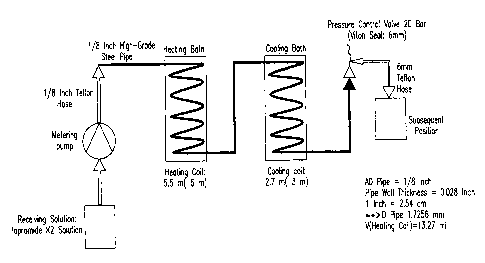Some of the information on this Web page has been provided by external sources. The Government of Canada is not responsible for the accuracy, reliability or currency of the information supplied by external sources. Users wishing to rely upon this information should consult directly with the source of the information. Content provided by external sources is not subject to official languages, privacy and accessibility requirements.
Any discrepancies in the text and image of the Claims and Abstract are due to differing posting times. Text of the Claims and Abstract are posted:
| (12) Patent: | (11) CA 2630413 |
|---|---|
| (54) English Title: | PROCESS FOR RECOVERY OF IOPROMIDE, SUITABLE FOR PHARMACEUTICAL PURPOSES, FROM MOTHER LIQUORS |
| (54) French Title: | PROCEDE DE RECUPERATION D'IOPROMIDE, A PARTIR DE SOLUTION-MERE, CONVENANT A DES FINS PHARMACEUTIQUES |
| Status: | Expired and beyond the Period of Reversal |
| (51) International Patent Classification (IPC): |
|
|---|---|
| (72) Inventors : |
|
| (73) Owners : |
|
| (71) Applicants : |
|
| (74) Agent: | MARKS & CLERK |
| (74) Associate agent: | |
| (45) Issued: | 2013-06-25 |
| (86) PCT Filing Date: | 2006-11-10 |
| (87) Open to Public Inspection: | 2007-06-14 |
| Examination requested: | 2010-11-18 |
| Availability of licence: | N/A |
| Dedicated to the Public: | N/A |
| (25) Language of filing: | English |
| Patent Cooperation Treaty (PCT): | Yes |
|---|---|
| (86) PCT Filing Number: | PCT/EP2006/010943 |
| (87) International Publication Number: | EP2006010943 |
| (85) National Entry: | 2008-05-20 |
| (30) Application Priority Data: | |||||||||
|---|---|---|---|---|---|---|---|---|---|
|
This invention describes a process for recovery of iopromide, suitable for
pharmaceutical purposes, by heat treatment of the mother liquors or the
secondary
crystallizate in a reactor and subsequent crystallization.
La présente invention concerne un procédé de récupération d'iopromide à usage pharmaceutique par traitement thermique des eaux mères ou du produit de cristallisation secondaire dans un réacteur puis par cristallisation.
Note: Claims are shown in the official language in which they were submitted.
Note: Descriptions are shown in the official language in which they were submitted.

2024-08-01:As part of the Next Generation Patents (NGP) transition, the Canadian Patents Database (CPD) now contains a more detailed Event History, which replicates the Event Log of our new back-office solution.
Please note that "Inactive:" events refers to events no longer in use in our new back-office solution.
For a clearer understanding of the status of the application/patent presented on this page, the site Disclaimer , as well as the definitions for Patent , Event History , Maintenance Fee and Payment History should be consulted.
| Description | Date |
|---|---|
| Time Limit for Reversal Expired | 2014-11-10 |
| Letter Sent | 2013-11-12 |
| Grant by Issuance | 2013-06-25 |
| Inactive: Cover page published | 2013-06-24 |
| Inactive: Final fee received | 2013-04-10 |
| Pre-grant | 2013-04-10 |
| Letter Sent | 2013-01-07 |
| Notice of Allowance is Issued | 2013-01-07 |
| Notice of Allowance is Issued | 2013-01-07 |
| Inactive: Approved for allowance (AFA) | 2012-12-17 |
| Amendment Received - Voluntary Amendment | 2012-10-04 |
| Inactive: S.30(2) Rules - Examiner requisition | 2012-04-04 |
| Amendment Received - Voluntary Amendment | 2011-06-17 |
| Letter Sent | 2010-11-25 |
| Request for Examination Requirements Determined Compliant | 2010-11-18 |
| Request for Examination Received | 2010-11-18 |
| All Requirements for Examination Determined Compliant | 2010-11-18 |
| Amendment Received - Voluntary Amendment | 2008-09-22 |
| Inactive: Office letter | 2008-09-09 |
| Inactive: IPRP received | 2008-09-08 |
| Inactive: Cover page published | 2008-09-05 |
| Letter Sent | 2008-09-03 |
| Inactive: Notice - National entry - No RFE | 2008-09-03 |
| Inactive: IPRP received | 2008-07-16 |
| Inactive: First IPC assigned | 2008-06-12 |
| Application Received - PCT | 2008-06-11 |
| National Entry Requirements Determined Compliant | 2008-05-20 |
| National Entry Requirements Determined Compliant | 2008-05-20 |
| Application Published (Open to Public Inspection) | 2007-06-14 |
There is no abandonment history.
The last payment was received on 2012-10-25
Note : If the full payment has not been received on or before the date indicated, a further fee may be required which may be one of the following
Patent fees are adjusted on the 1st of January every year. The amounts above are the current amounts if received by December 31 of the current year.
Please refer to the CIPO
Patent Fees
web page to see all current fee amounts.
| Fee Type | Anniversary Year | Due Date | Paid Date |
|---|---|---|---|
| MF (application, 2nd anniv.) - standard | 02 | 2008-11-10 | 2008-05-20 |
| Registration of a document | 2008-05-20 | ||
| Basic national fee - standard | 2008-05-20 | ||
| MF (application, 3rd anniv.) - standard | 03 | 2009-11-10 | 2009-10-26 |
| MF (application, 4th anniv.) - standard | 04 | 2010-11-10 | 2010-10-22 |
| Request for examination - standard | 2010-11-18 | ||
| MF (application, 5th anniv.) - standard | 05 | 2011-11-10 | 2011-10-25 |
| MF (application, 6th anniv.) - standard | 06 | 2012-11-13 | 2012-10-25 |
| Final fee - standard | 2013-04-10 |
Note: Records showing the ownership history in alphabetical order.
| Current Owners on Record |
|---|
| BAYER SCHERING PHARMA AKTIENGESELLSCHAFT |
| Past Owners on Record |
|---|
| HARTMUT KAGERER |
| HARTMUT SEBA |
| INGO ORTMANN |
| MEIKE DEMBECK |